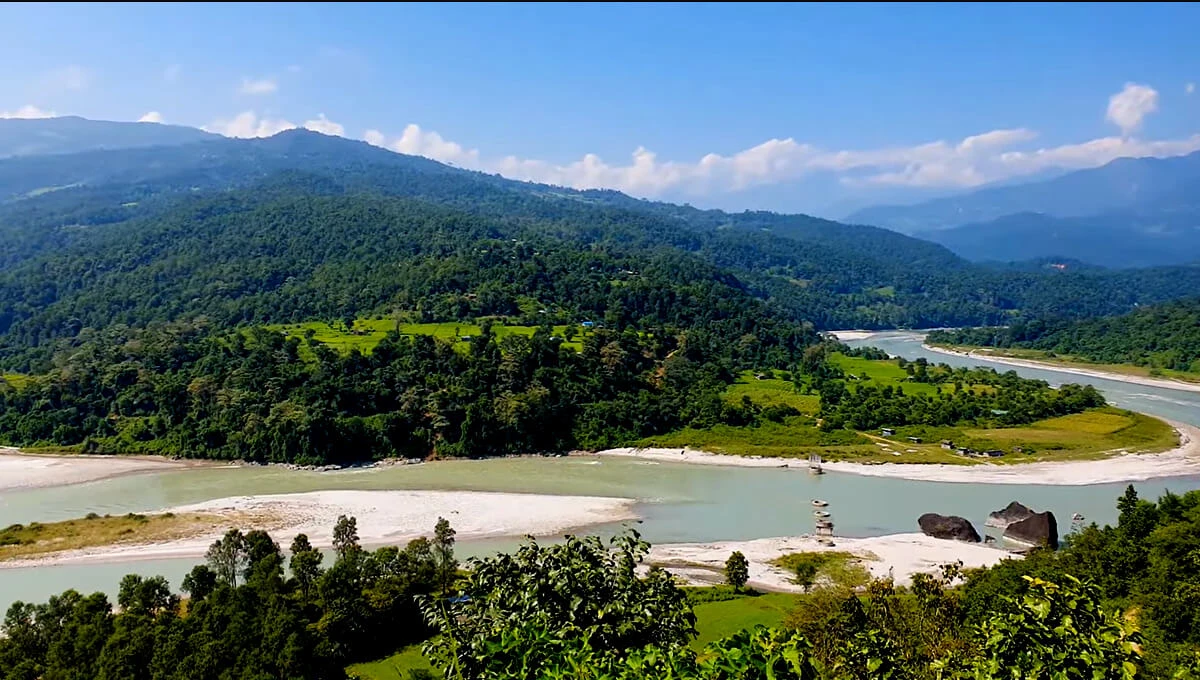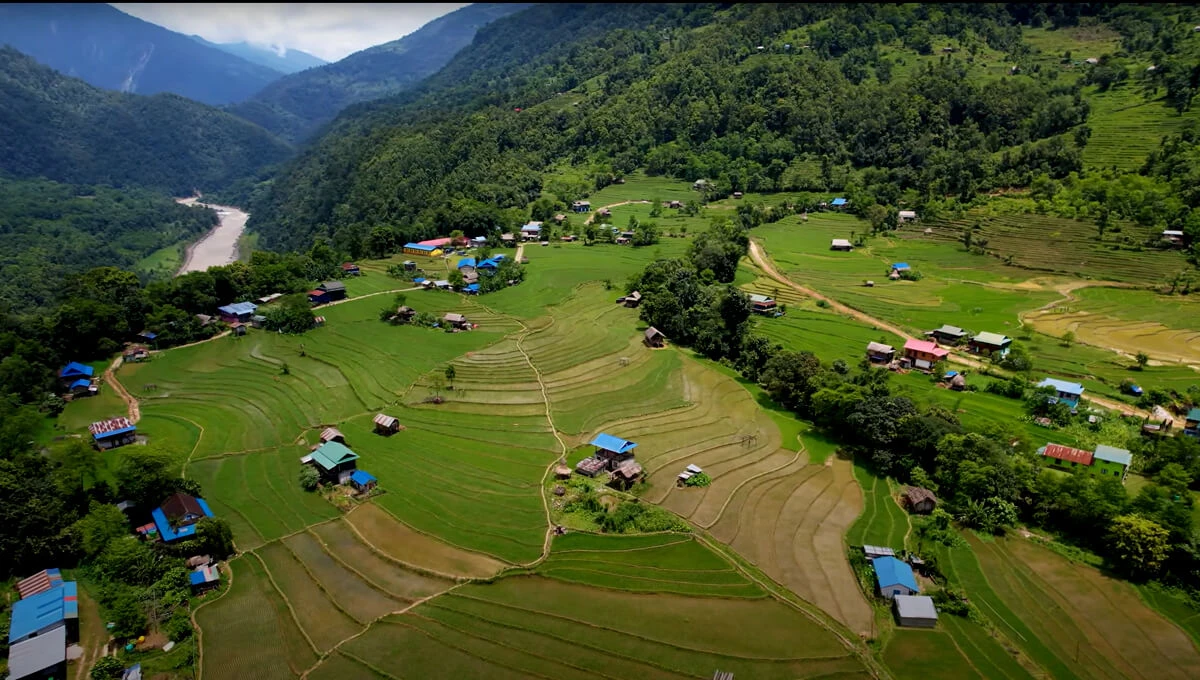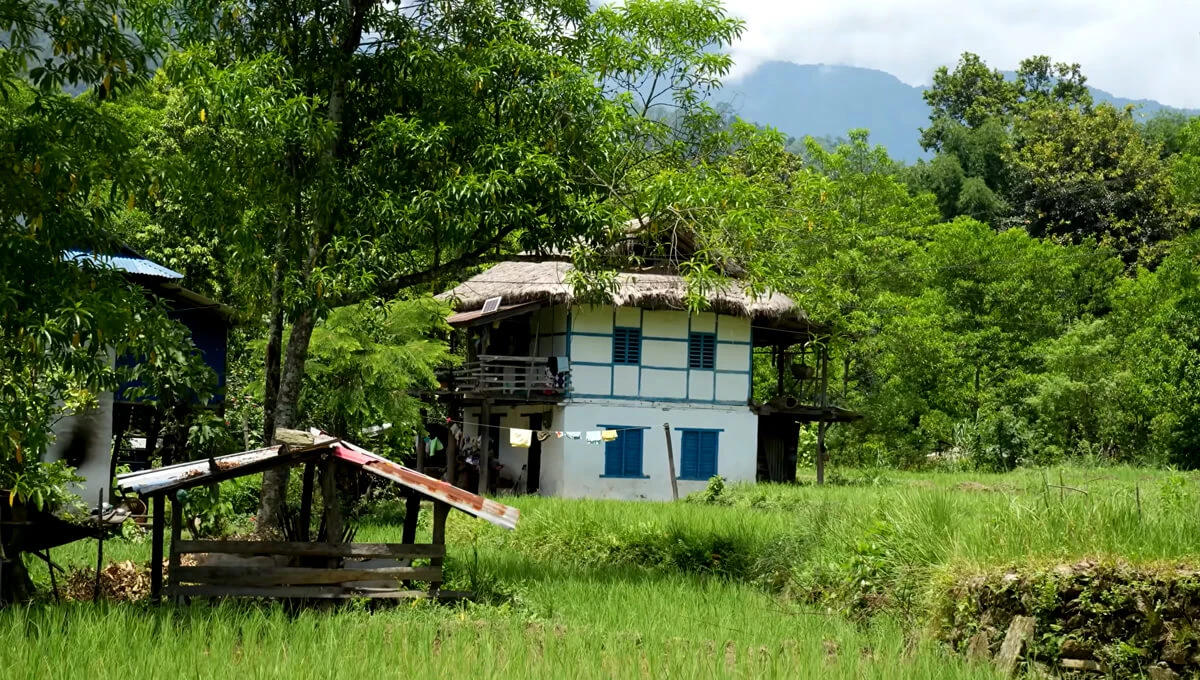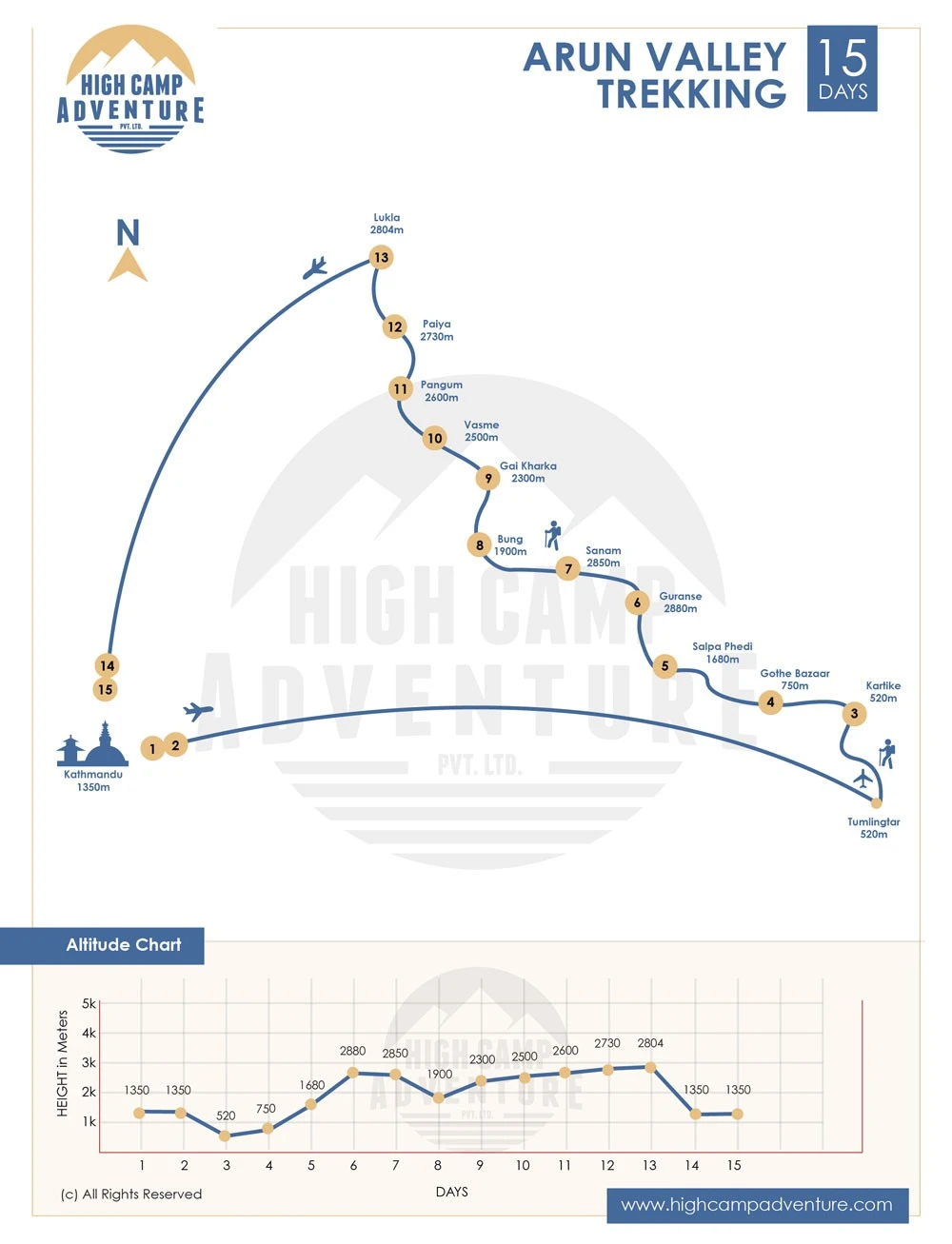Trip Overview
The Arun Valley Trek, one of the hidden gems in eastern Nepal, is considered an off-the-beaten-path trail. Located in between the famous Everest and Makalu massifs, this Valley trek involves passing through dense forests, traditional Rai and Sherpa villages, terraced fields, and remote mountain routes. The Arun Valley Trek is known to be a perfect option for those who want an authentic experience without large crowds, like the Everest Base Camp or the Annapurna Base Camp route.
Starting your Arun Valley Trek with a morning flight from Kathmandu to Tumlingtar offers you some of the mesmerizing views of eastern Nepal. From there, you take a walk through the lowland hills along the Arun River and gradually climb through varied landscapes, ranging from subtropical forests to alpine ridges. Along the way, you will be passing through small villages like Kartike, Gothe Bazaar, Salpa Phedi, and Bung, rewarded with a chance to experience local culture, traditions, and the daily life of the Rai and Sherpa communities.
The most important highlights of the entire Arun Valley Trek are to cross the Salpa La Pass, a mountain pass that is surrounded by blooming rhododendron forests, and treat you to panoramic views of snow-capped mountains. Along the way, you are rewarded with jaw-dropping views of peaks such as Makalu and Mera Peak, adding beauty to your trek. At times, you may even encounter wildlife such as red pandas, Himalayan pheasants, and other rare species within the Makalu Barun National Park.
Finally, the trek concludes in Lukla, the major gateway to the Everest region, where you will be taking a morning flight back to Kathmandu. With a perfect fusion of rich biodiversity, quiet trails, and a mix of culture and nature, it is what makes the Arun Valley Trek an unforgettable Himalayan journey. This trek is mainly recommended to those who love nature and adventure, looking for something different from the popular trekking routes.
Whether you are a seasoned trekker or an ideal hiker, wanting a peaceful experience, then the Arun Valley Trek can truly be a rewarding experience for you in the eastern region of Nepal.
Major Highlights of the Arun Valley Trek
- Take on a trek that takes you through a peaceful region located between the Everest and Makalu massifs.
- Walk through traditional Rai and Sherpa villages, where you can enjoy their warm local hospitality.
- Cross Salpa La Pass (3,360 m), one of the sacred mountain passes, offering you panoramic views of snow-covered peaks.
- Witness a gradual change in the landscapes as you pass from the subtropical valley of Tumlingtar to the alpine forests of Guranse.
- Pass alongside the Makalu Barun National Park, where you can see rare species like red panda, Himalayan monal, and a wide range of birds.
- A less crowded trek in Nepal compared to the popular Everest Base Camp Trek.
Where is the Arun Valley Trek Located in Nepal?
The Arun Valley Trek is located in eastern Nepal, between the famous Everest and Makalu regions. The Valley is within the Makalu Barun National Park, one of the most biodiverse and remote areas in the Himalayas. The trek usually starts from Tumlingtar, a small town in the Sankhuwasabha District, where you take a gradual climb through charming villages like Kartike, Goethe Bazaar, and Bung, before you end your trek in Lukla.
The journey includes passing alongside the Arun River, offering a chance to witness the beauty of this region. The area is surrounded by dense forests, terraced farmlands, and traditional communities, offering a unique glimpse into their way of life. Along the way, you cross the high mountain pass, Salpa La Pass at 3,360 meters, where you are treated to the jaw-dropping views of snow-covered peaks and peaceful landscapes.
Compared to other popular routes, the Arun Valley Trek is less explored, making it an excellent choice for those wanting a quiet and cultural experience in Nepal. If you are in search of a unique Himalayan journey, the Arun Valley Trek in Nepal might be the perfect choice.
What Makes the Arun Valley Trek Worth it for First-Time Trekkers?
The peaceful trails, culturally rich area, and less crowded trekking experience are what truly make the Arun Valley Trek worth it for first-time trekkers. Because of the lower elevations compared to other popular routes, the Arun Valley Trek is perfect, as it is easily manageable with authentic experiences and beautiful scenery. Below are some of the reasons that make the Arun Valley Trek suitable for beginners.
- Trek through less crowded trails compared to the Everest and Annapurna region, making the walk more enjoyable and less stressful for beginners.
- Moderate altitude, which reduces the risk of altitude sickness, is mainly perfect for those who are not used to high elevations.
- Get a chance to walk through traditional Rai and Sherpa villages, where you can experience the real lifestyle of the locals.
- The route offers you a perfect mix of terraced fields, forests, rivers, and mountain views.
Arun Valley Trek Itinerary - 15 Days and Trekking Routes
The Arun Valley Trek is one of the most peaceful and scenic trekking adventures in eastern Nepal. This trek is ideal for those wanting to explore the untouched landscapes, traditional villages, and rich cultural diversity. This 15 Day Arun Valley Trek itinerary offers a balanced combination of nature, culture, and adventure, taking you through one of the deepest valleys. The journey begins in Kathmandu, with a morning flight to Tumlingtar, and ends in the picturesque mountain town of Lukla, also considered the major gateway to the Everest region.
The trekking route passes through beautiful places like Kartike, Gothe Bazaar, and Salpa Phedi, gradually ascending through the scenic Salpa La Pass. From there, the trail then descends through dense forests and traditional Rai and Sherpa villages like Sanam, Bung, and Pangma, where you are treated to stunning views of Makalu and Mera Peak.



